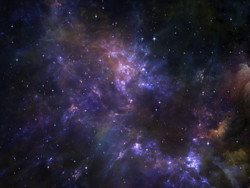Shedding light on the dark side of the Universe
Dark matter is an invisible substance thought to make up 27 % of all matter in our Universe. The strength of its gravitational pull keeps galaxies from separating at the speed at which they whirl. Dark energy, on the other hand, is pushing the Universe apart, increasing the rate with which the cosmos expands. Scientists believe that dark energy could make up about 70 % of the Universe while known particles make up just 5 %. What dark matter and dark energy actually has remained a mystery until today, despite many potential explanations suggested for both. Scientists working on the EU-funded 'Understanding the dark universe with 3D weak gravitational lensing' (DARKMATTERDARKENERGY) project have used the most successful technique yet developed to investigate this dark sector: gravitational lensing. Dark matter does not interact with electromagnetic force operating between charged particles and therefore, does not emit or reflect light. However, it seems to play the most important role in shaping the Universe on large scales, interacting with the force of gravity. The curvature of time-space near gravitating mass, including dark matter, deflects passing rays of light, thereby distorting the images of background galaxies. Measurements of the distribution of dark matter seen by gravitational lensing in 65 galaxy clusters were compared with the distribution of gas determined from X-ray emission and scattering of photons from the cosmic microwave background. This comparison led to unexpected findings, such as the luminosity-temperature relationship remaining constant for the past 5 million years in the clusters of varying mass. Even more puzzling were the findings from the analysis of collision between galaxy clusters. In observations from the Hubble Space Telescope, the Chadra X-ray Observatory in space and the ESO Very Large Observatory on the ground, the DARKMATTERDARKENERGY team found four collisions. Together with the 'Bullet cluster' discovered in 2006, these collisions between galaxy clusters have provided some evidence that dark matter interacts with ordinary matter. If these results are correct and dark matter interactions are more common than expected, that would confirm the existence of dark matter and dark energy. More importantly, they would provide a more accurate estimate of how much of this mysterious substance exists. For this purpose, scientists extended the work of the DARKMATTERDARKENERGY after its completion with new experiments such as ESA's Euclid telescope.







